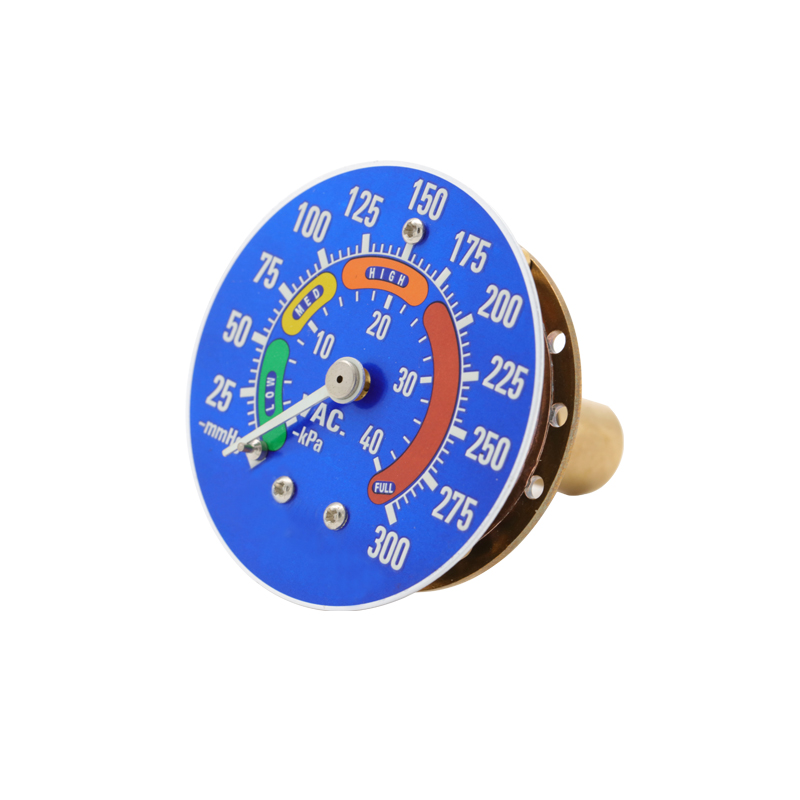
Dec . 07, 2024 02:56 Back to list
High Temperature Differential Pressure Measurement for Industrial Applications
Understanding High-Temperature Differential Pressure Gauges An Overview
In various industrial applications, especially those involving high temperatures and pressure differentials, accurate measurement and monitoring are crucial to ensure safety and efficiency. High-temperature differential pressure gauges, often referred to simply as differential pressure gauges, play a pivotal role in these high-demand environments. This article aims to delve into the working principle, applications, and significance of these instruments.
What is a Differential Pressure Gauge?
A differential pressure gauge is an instrument designed to measure the difference in pressure between two points within a system. This measurement is critical in many processes, particularly in filtration, fluid flow, and level measurements. By quantifying the pressure drop across a component or section of a system, such as filters or heat exchangers, operators can monitor performance and ensure the system operates within its designed specifications.
The Challenge of High Temperatures
In many industries, such as oil and gas, chemical manufacturing, and power generation, the conditions under which these gauges operate can be extreme. High temperatures can lead to equipment failure, inaccurate readings, or even safety hazards. Therefore, it is essential that the differential pressure gauges used in such environments are designed to withstand these conditions.
High-temperature differential pressure gauges are specifically engineered to function reliably at elevated temperatures. They feature materials that offer excellent thermal resistance and stability, allowing them to maintain accuracy and integrity in measurements despite the harsh environment.
Construction and Working Principle
The construction of a high-temperature differential pressure gauge typically includes a sensing element that can be either a diaphragm or a piezoelectric element. The diaphragm-type gauge uses a flexible membrane that deflects in response to pressure changes. This deflection is translated into a readable output, often in the form of a dial or a digital readout.
The gauge is filled with a fluid that can also withstand high temperatures. This fluid helps transmit the pressure differences sensed by the diaphragm to the gauge mechanism. Several models may use a Bourdon tube to convert pressure into a mechanical movement, which ultimately drives the needle on a dial or triggers a digital sensor.
high temp differential pressure gauge jah

Applications in Industries
High-temperature differential pressure gauges find applications across various industries
1. Oil and Gas In the extraction and processing phases, these gauges help monitor pressure drops across filters and pipelines, ensuring that operations remain efficient and do not lead to downtime or leaks.
2. Chemical Processing They are essential for monitoring pressure differentials in reactors and separators, where controlling reactions is critical. Accurate measurements help prevent hazardous situations and maintain product quality.
3. Power Generation In power plants, these gauges help monitor steam pressure differences in boiler systems, which is vital for efficient energy production and preventing equipment damage.
4. HVAC Systems High-temperature differential pressure gauges are used in heating and ventilation systems to measure airflow and maintain optimal performance.
Importance of Accurate Measurement
The accuracy of measurements provided by high-temperature differential pressure gauges is crucial. Inaccuracies can lead to several issues, including inefficient operations, increased energy consumption, potential safety hazards, and costly downtime. Therefore, selecting the right gauge that meets the operational demands, including temperature rating and pressure range, is essential for reliable performance.
Conclusion
High-temperature differential pressure gauges are invaluable tools in numerous industrial applications, enabling the safe and efficient operation of various processes. They provide critical data that helps maintain operational efficacy while ensuring system safety. As industries continue to innovate and push the limits of technology, the demand for reliable and accurate measurement instruments like high-temperature differential pressure gauges will only grow. Understanding their functions and applications is essential for engineers and operators alike, paving the way for safer and more efficient industrial operations.
-
High-Precision Mass Diaphragm Pressure Gauge - Reliable & Durable Solutions
NewsJun.10,2025
-
Explain Diaphragm Pressure Gauge Expert Guide, Top Manufacturers & Quotes
NewsJun.10,2025
-
Affordable Differential Pressure Gauge Prices in China Top Manufacturers
NewsJun.10,2025
-
Reliable Water Fire Extinguisher Pressure Gauges for Safety
NewsJun.10,2025
-
Durable Diaphragm Protection Pressure Gauges Get Quote
NewsJun.09,2025
-
WIKA Differential Pressure Gauge with Switch Reliable Monitoring & Control
NewsJun.09,2025
